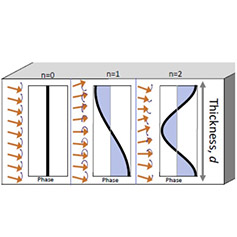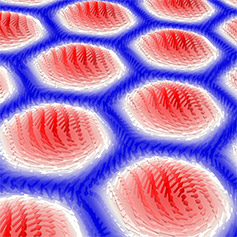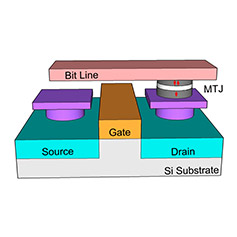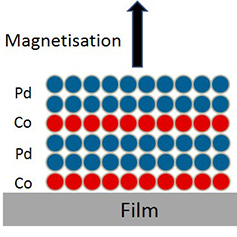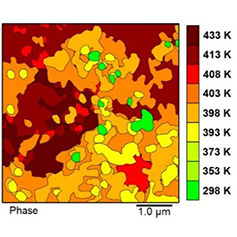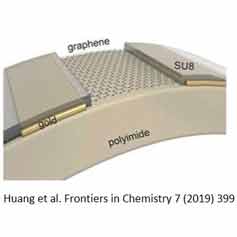
Nano-engineering and spintronic technologies
Our researchers
- Christoforos Moutafis
- Paul Nutter
- Tom Thomson (Area Lead)
The nano engineering and spintronic technologies (NEST) group focuses on understanding the physical processes and developing the fundamental understanding necessary to create the computational and data storage devices of the future.
The NEST Home Page has more information.
Our research includes exploring recent device ideas in non-conventional computing and encompasses a broad range of activities to explore the spin of electrons in nanoscale magnetic structures. The group interacts strongly with the Henry Royce Institute for advanced materials and the National Graphene Institute. We regularly use large scale facilities in the UK and Europe for neutron and X-ray scattering and have wide range of collaborators in the UK and Europe.
Research focus
Our activities and interests are best illustrated through the range of projects undertaken in the NEST group:
-
Spin wave phenomena - THz sensing and dedicated Machine Learning devices
Spin dynamics – the high frequency precession of spins in magnetically ordered systems – is one of the fundamental phenomena used in spintronics. The effect is used to determine the underlying properties of materials and devices and is increasingly being explored as a possible route to create dedicated computational elements such as classifiers. Our research covers a range of activities from the generation of THz radiation using the Spin Seebeck and inverse Spin Hall Effect through to frequency enhanced devices based on antiferromagnetic structures.
-
Skyrmions – new approach to non-von Neumann computing
Magnetic skyrmions are nanoscale magnetic spin configurations with a whirling vortex-like spin structure that behave like quasi-particles and exhibit characteristic topological properties and intriguing dynamics. Their nanoscale size, robustness and ability to move with low electrical current densities, make them excellent candidates for integration in next generation magnetoelectronic devices. Our research includes a range of activities from fundamental topological switching process to using skyrmions for novel non-von Neumann nanocomputing. We take a holistic approach utilizing an array of techniques, from computational studies to developing skyrmionic multilayers and X-ray investigations.
-
Magnetic random access memory – a developing paradigm in data storage
Magnetic Tunnel Junctions (MTJ’s) where an atomically thin insulating barrier – typically MgO - sandwiched between two ferromagnetic layers - CoFeB - acts as a switchable spin filter are at the core of spintronics. Our research involves creating and characterizing prototype MTJs for Spin Transfer Torque - MRAM and for a new class of Spin Torque Oscillator (STO) which can be used to enhance the data storage capacity of hard disk drives and for sensing.
-
Nanoscale materials for spintronics, data storage and clinical applications – the building blocks
Strongly magnetised materials – to avoid data loss it is essential to have materials where the magnetic properties do not change over time. Our work focuses on high perpendicular anisotropy films for Spin Transfer Torque (STT) data storage/processing devices where the magnetisation points out of the plane allowing more bits to be packed onto a particular area, examples include specific crystallographic phases such as L10 FePt and Co/Pd multilayers.
-
Nanoscale materials for spintronics, data storage and clinical applications – the building blocks (2)
Underpinning the exploration of all new computational, data storage and sensing devices are advanced materials with designer properties. FeRh is fascinating material that changes from an antiferromagnet at room temperature to a ferromagnet at around 100°C. This allows the magnetisation to be “switched on” simply by heating. Combining this with other nanoscale magnetic materials provides the building block needed to create new classes of multifunctional spintronic devices.
-
Graphene based sensors – signals to actionable information
This is a multidisciplinary project combining physics, engineering and computer science to build an end to end pipeline from a wearable sensor built out of 2D materials through to a data analysis and diagnostic framework to detect and analyse muscle movement from patients suffering from neurodegenerative diseases.

